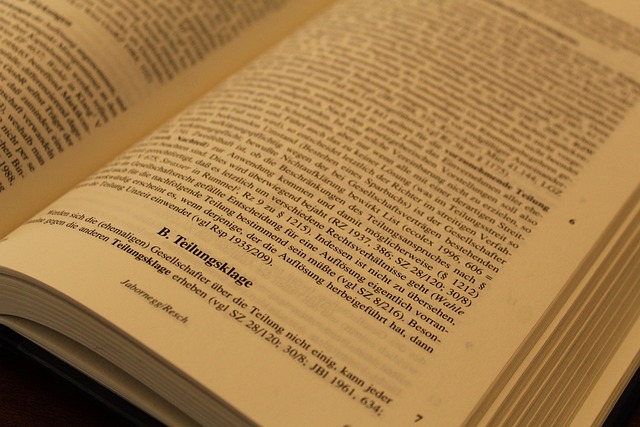Contempt of court, a serious issue undermining judicial authority, is addressed through crucial legal mechanisms, especially the legal enforcement of court orders. Legal experts guide individuals and organizations in navigating complex procedures, ensuring compliance with laws and regulations. This process involves strategies like wage garnishment, asset seizure, and representation in hearings to enforce orders effectively. By leveraging case law, understanding procedural rules, and utilizing technology, legal professionals facilitate fair outcomes, uphold justice, and set precedents for future compliance, as showcased in real-world case studies.
In the intricate landscape of legal dispute resolution, understanding contempt of court is paramount. This article delves into the nuanced world of contempt system navigation, highlighting the pivotal role legal expertise plays in guiding individuals and entities through complex procedures. We explore the fundamental aspects of contempt, focusing on the crucial topic of legal enforcement of court orders. From defining procedural mechanisms to addressing challenges, this comprehensive guide presents real-world case studies showcasing successful contempt resolution strategies.
- Understanding Contempt of Court: A Legal Perspective
- The Role of Legal Expertise in Navigation
- Legal Enforcement of Court Orders: Procedures and Mechanisms
- Challenges and Strategies for Effective Compliance
- Case Studies: Success Stories of Contempt Resolution
Understanding Contempt of Court: A Legal Perspective

Contempt of court is a legal concept that refers to the willful failure or refusal to comply with a court order. It’s a serious matter, as it undermines the authority and integrity of the judiciary, hindering the fair and efficient administration of justice. The legal perspective on contempt focuses on ensuring the rule of law and protecting the rights of all parties involved in a legal process.
From a legal standpoint, the enforcement of court orders is paramount. Contempt proceedings are an essential mechanism to secure compliance with judicial decisions, ranging from financial settlements to specific actions or restrictions. Legal experts play a crucial role in guiding individuals and organizations through these processes, ensuring they understand their obligations and the potential consequences of non-compliance.
The Role of Legal Expertise in Navigation

The role of legal expertise is pivotal in effectively navigating complex systems, particularly in the realm of contempt system navigation. Legal professionals armed with comprehensive knowledge and skills are best equipped to guide individuals through the intricate web of court procedures, ensuring compliance with existing laws and regulations. Their expertise facilitates the legal enforcement of court orders, a critical aspect that demands meticulous attention to detail.
Legal minds can deconstruct complex legal frameworks, interpret them accurately, and devise strategies that ensure adherence to the law. This is especially crucial in situations where non-compliance may lead to severe consequences. By leveraging their understanding of case law, legal intricacies, and procedural rules, they enable clients to navigate challenges seamlessly, enhancing the chances of favorable outcomes.
Legal Enforcement of Court Orders: Procedures and Mechanisms

The legal enforcement of court orders is a critical aspect of ensuring justice and compliance. Once a judgment or order is issued by a court, it holds legal force and effect, and there are specific procedures in place to guarantee its execution. These mechanisms are designed to ensure that parties involved adhere to the ruling, whether it involves debt recovery, child custody, or any other civil or criminal matter.
Enforcement typically begins with the court issuing an enforcement order, which may include garnishment of wages, seizure of assets, or even jail time for non-compliance. Legal professionals play a pivotal role here by guiding clients through these processes, ensuring they understand their rights and obligations. They assist in preparing and filing the necessary documents, submitting evidence, and representing the client in any subsequent hearings related to the enforcement proceedings.
Challenges and Strategies for Effective Compliance

Navigating contempt system requirements with legal expertise involves overcoming significant challenges. Attorneys and professionals must ensure strict compliance with court orders, a process that demands meticulous attention to detail. The legal enforcement of court orders is not merely about presenting documentation; it entails a deep understanding of procedural rules and the ability to adapt strategies based on unique case dynamics.
Effective compliance strategies include staying apprised of evolving legal standards, maintaining comprehensive records, and fostering open communication with all stakeholders. Technology plays a pivotal role in streamlining these processes, enabling efficient document management and real-time updates. Moreover, continuous professional development ensures lawyers are equipped to handle complex contempt cases, ultimately enhancing the effectiveness of legal enforcement of court orders.
Case Studies: Success Stories of Contempt Resolution

In the realm of legal enforcement of court orders, case studies offer tangible examples of successful contempt resolution strategies. These success stories highlight effective approaches that have led to positive outcomes, fostering a culture of accountability and respect for judicial authority. For instance, consider a scenario where a former spouse repeatedly violated a restraining order, mandating stringent measures to ensure compliance. Through a combination of legal advocacy, strategic communication, and collaborative problem-solving, the court successfully navigated the contempt proceedings, ultimately achieving peace and security for the aggrieved party.
Another compelling case involves a corporate entity that failed to adhere to environmental regulations, resulting in substantial fines and legal repercussions. The company’s eventual compliance stemmed from a comprehensive strategy involving legal expertise, public pressure, and strategic negotiations. This resolution not only addressed the immediate contempt but also set a precedent for future adherence to environmental standards, demonstrating the power of legal enforcement in driving positive change.






